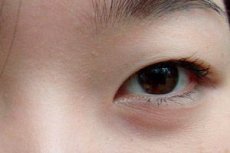Rudimentary organs of man
Last reviewed: 14.03.2025

All iLive content is medically reviewed or fact checked to ensure as much factual accuracy as possible.
We have strict sourcing guidelines and only link to reputable media sites, academic research institutions and, whenever possible, medically peer reviewed studies. Note that the numbers in parentheses ([1], [2], etc.) are clickable links to these studies.
If you feel that any of our content is inaccurate, out-of-date, or otherwise questionable, please select it and press Ctrl + Enter.

Rudimentary organs of a person are those organs in the body that, with the course of evolution, ceased to function and ceased to be significant.
Rudiments and atavisms
Rudiments and atavisms have fundamental differences. Unlike the non-functioning parts of the body that are often found in the Earth's population, which are rudimentary organs, atavisms occur in very rare cases. Atavismas include such unique cases as:
- additional to the existing mammary glands;
- outgrowth of tail;
- hair covering, completely filling the area of the human body;
- and others.
Rudimentary organs and their function
Numerous scientific studies have helped to come to the conclusion that vestigial organs are an example of evidence of evolution. This confirms:
- the theory of evolution (due to the identification of certain kindred relationships between the organisms that exist now and those that have died out)
- Natural selection (due to the action of which an unnecessary attribute was removed)
Today, rudimentary organs have a specific purpose, although their basic functionality has been lost as useless.
Rudimentary organs in humans include:
Appendix
Appendix is called the appendage of the cecum. The average size of this rudiment is 10 cm in length and 1 in width. Inflammation of this appendicitis, appendicitis, is now treated by surgery. Before the breakthrough in medical science, appendicitis most often was fraught with a fatal outcome. Earlier, the appendix performed important functions and allowed the human body to digest tough foods. Now the appendix also has a role in hormonal processes, performs some secretory functions and has a certain protective role.
Coccyx
The coccyx is a fused vertebrae (in the number of 3 to 5) in the lower part of the spine. This organ is perceived as a rudimentary caudal process. Now it is important for the human body in such aspects:
- to the coccyx are attached ligaments and muscles responsible for the distal parts of the large intestine
- part of the muscles attached to the coccyx, responsible for the normal course of the functioning of the genitourinary system
- to the coccyx is attached a part of the gluteus muscle, which plays an important role in the process of extension and flexion of the thigh
- thanks to the coccyx, the load on the pelvic bone is evenly distributed.
Ear Muscles
This vestigial organ is found rarer than the others and is the muscles that are located around the ear shell. Individuals with this organ are able to perform independent movements with their ears. Now these muscles do not perform any functions. Earlier they helped to better hear the approach of enemies, animals and avoid danger.
 [5]
[5]
Morganian throat of the larynx
The vestigial organ exists in the form of depressions in the zone between the vocal folds (false and true) on the sides of the larynx. Once they played an important role in protecting the larynx and were needed to create different sounds. Now they are involved in the process of creating a resonant voice.
Wisdom teeth
These rudimentary teeth are accounted for by the eighth and grow at about 18-25 years. The main function they performed was a productive chewing on rough raw food. The need for them fell away when humanity began to heat food products thermally.
Often wisdom teeth grow up incorrectly with respect to others, for example, grow sideways or dig into the cheek. This is due to the fact that with the course of evolution the brain has increased, the jaws have decreased, and the wisdom teeth have not changed the trajectory of their growth.
Wisdom teeth can sometimes be an obstacle to maintaining oral hygiene due to eating that gets to these teeth. Also, they are difficult to clean. Often they are removed immediately after the appearance. However, in our time there are people who do not have wisdom teeth pads.
Epicanthus
Epicanthus, or the third eyelid, is characteristic of Bushmen and representatives of the Mongoloid race. It looks like a fold, and creates the effect of narrowing the cut of the eyes. Scientists agree that earlier this rudiment performed a protective role, based on natural conditions.
Pyramidal abdominal muscle
This organ looks like a triangular muscle of small size in the anterior group of abdominal muscles. Now she does not perform absolutely any functions in people. In a large part of the population, it is absent. However, it is and plays an important role in all marsupials.
Other bodies
Some races and peoples have rudimentary human organs, uncharacteristic for others. Thus, in Bushmen and Hottentots, the deposits in the form of a fat layer on the hips and buttocks perform approximately the same functions as the humps of camels.

